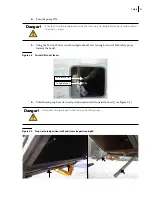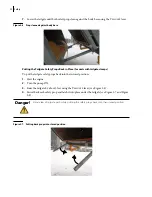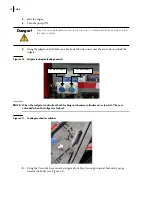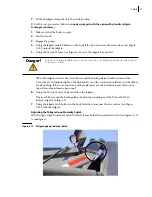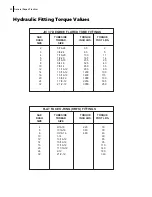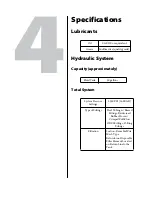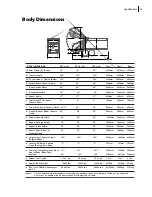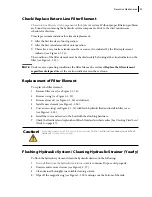
General Repair Practices 35
a. Examination or lubrication of the PTO, pump or drive shafts
b. Entering the front of the body
c. Entering the tailgate
Locking Out and Tagging Out the Vehicle
Always check to make sure the body access door is locked shut before entering the cab.
Pump removal: due to the weight and location of the pump, it is advisable to place a floor jack
beneath the pump and apply a slight pressure, so that when the bolts are removed the pump is
supported.
When it becomes necessary to raise the tailgate for maintenance or repair, do not enter the area
beneath the tailgate unless the proper bracing has first been applied. All bracing and supports must
be able to support 8,000
lbs
(3,629
kg).
Never enter the body when the load is under compaction pressure. Bring the packer panel to the
“interrupted cycle” stop position and retract the pushout panel slightly.
Welding Precautions
Electric Welders
Observe the following precautions when using electric welders:
Electric arc welders should have a separate, fused
disconnect circuit.
Welders must be used according to the manufacturer’s specifications.
All electric welding should be done in a well-ventilated area.
The radiation given off by the arc will destroy the retina of the eye. Wear an approved welder’s
helmet.
Welding radiation will produce severe burns on unprotected skin, similar to sunburn, so wear
heavy clothing. Use natural fiber or leather - avoid synthetic fiber clothing.
Oxy-Acetylene Torches
Observe the following precautions when using oxy-acetylene torches:
Acetylene is a highly explosive gas which should be
treated with the greatest care. At pressures
above 15
psi, acetylene will explode by decomposition without the presence of air. No other
industrial gas has such a wide explosive range.
Oxygen will spontaneously ignite in the presence of oil and grease. The hoses, torch handles and
regulators must be kept free of petroleum products.
Before using the equipment, inspect it for cleanliness and for leaks.
Hoses cannot be safely repaired; when they show signs of deterioration, they should be replaced.
Return regulators periodically to the distributor for inspection. Store gas bottles upright and out
of the sun. Do not attempt to repair or make internal adjustments on the regulators yourself.
If you suspect a leak in the system, perform a leak test using an approved leak detection system.
DO NOT USE HOUSEHOLD OR LAUNDRY SOAP BECAUSE OF THE DANGER OF
OXYGEN COMBINING WITH IT AND EXPLODING.
Summary of Contents for 2R-III
Page 1: ...2R III MAINTENANCE MANUAL...
Page 2: ......
Page 3: ...2R III MAINTENANCE MANUAL...
Page 5: ......
Page 6: ......
Page 20: ...10 Introduction...
Page 42: ...32 Safety...
Page 58: ...48 Preventive Maintenance Figure 5 1 Hydraulic tank w return filter 1 2 3 4 5 6 7 8...
Page 66: ...56 Preventive Maintenance...
Page 102: ...92 Troubleshooting...

